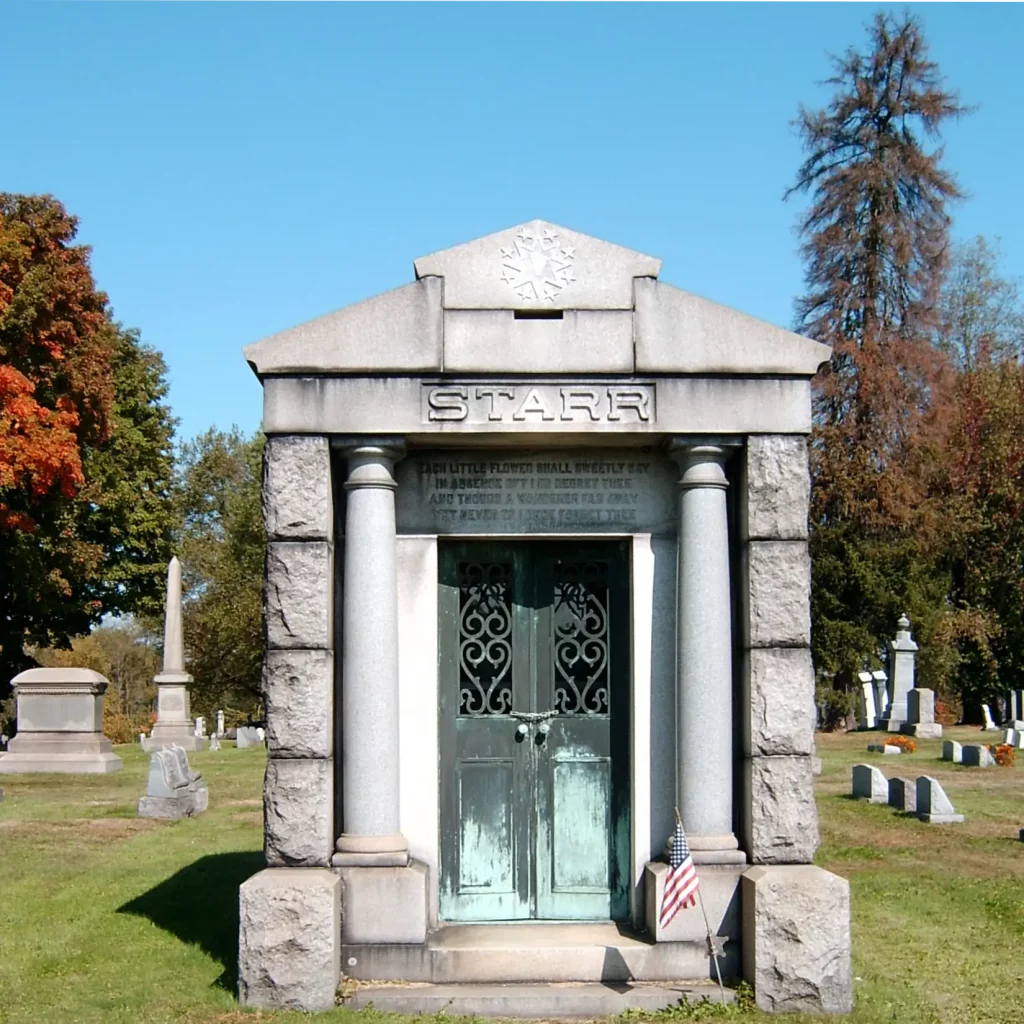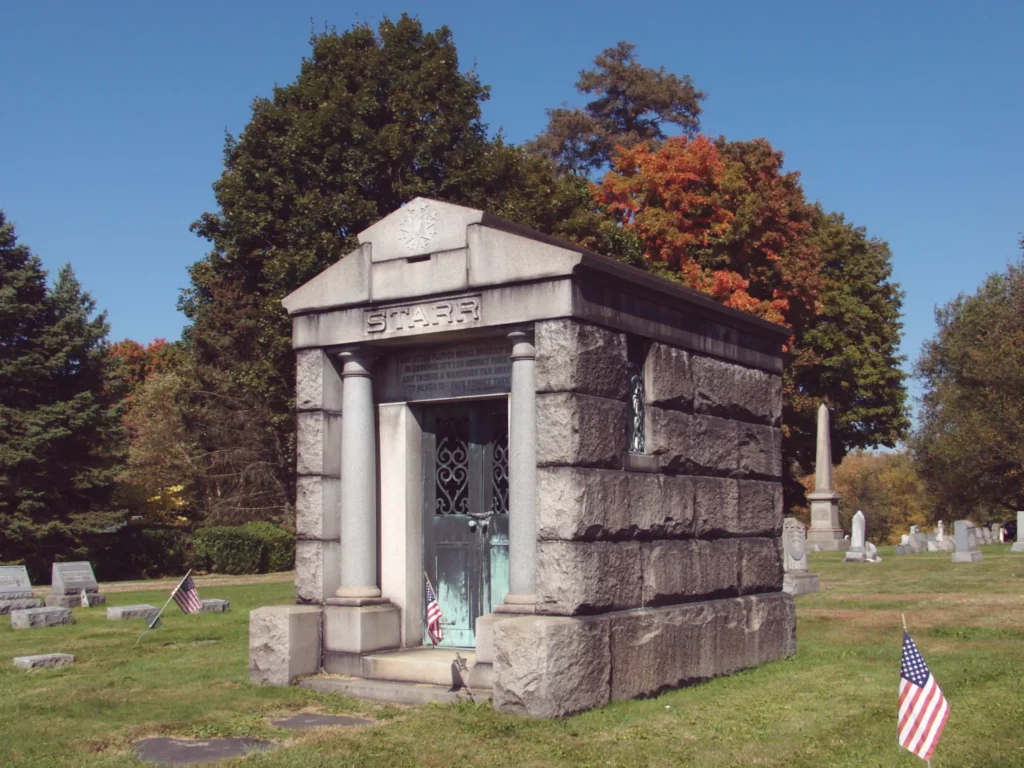It seems the Schmitts couldn’t afford even the fee for Zelienople’s proofreading-challenged resident stonecutter, but they succeeded in crafting a stone that has preserved Elisabeth Schmitt’s name for nearly two centuries. The N in “in” seems to have been cut backwards, and then corrected; or possibly it was cut forwards, and then corrected to backwards.
-
Elisabeth Schmitt Tombstone, Zelienople Cemetery
-
Allen Shaft, Zelienople Cemetery

A simple and tasteful marble shaft typical of the middle nineteenth century.
-
Tombstones in the Zelienople Cemetery
The Zelienople Community Cemetery, as it is now called, has grown into a fairly large institution with a surprisingly huge community mausoleum. One section of it, however, is the old town burying-ground, and here the early settlers rest under locally-cut tombstones, many of which are still legible after the better part of two centuries. Here we gather a number of tombstones that show the clearly identifiable style of the same stonecutter, who was prone to errors, which he corrected by any means necessary. He worked for many years, but never overcame his sloppiness. The loop around the I in “In memory,” the strangely narrow S, and the form of the ampersand are all distinctive.
 “In
“In
memory of A Catherine
GoehrinG born April 2
1747 She lived in marri
age with Wm H Goehring
52 years & deid March 12
1821 Aged 74 years”One might think that the one word a stonecutter would know how to spell would be “died.”
 “Hier ruhen
“Hier ruhen
die Gebeine der
verstorbenen Salome
Catherine Roth sie war
[Geboren Den 22]en
April 1837 Gestorben
Den 18ten April 1841
Jhr Alter hat sie gebracht
auf 3 Jahr 11 monat und
27 Tage”Father Pitt’s rough translation:
“Here lie the bomes of the deceased Salome Catherine Roth. She was born the 22nd of April 1837 and died the 18th of April 1841. She reached the age of 3 years, 11 months, and 27 days old.”
Although this stone is in German, the letter forms and the little flower or star pattern at the top mark it as the work of the same stonecutter, who apparently messed up the word “Geboren” and the date so badly that he had to slice out that whole section of the stone and start over.
 “In
“In
memory of Elisabeth
Hoon who died Desem
the 16 1841 Aged 11
years 8 months & 17
days.”A stonecutter should also learn to spell all the months.
 “In
“In
memory of James Son
of Adam Goe[h]ring who
died Jan 12th 1841 Aged
4 years & 22 Days”Here he left the H out of “Goehring” and had to stick it in above the name.
 “In
“In
memory of Mary
J Harris who died
Feb 8 1833 Aged
1 year 8 months
& 11 days” “In
“In
memory of Meihael
Weiss died Sept 11th
1837 Aged 77 years
9 months & 21 Days.”One is tempted to read “Meihael” as a misspelling of “Michael,” but it seems to be not unheard-of as a German name.
 “In memory of
“In memory of
Marion Ross goll
Who departed
This life oct 3
1828 in her 9th year”Father Pitt believes that “goll” is Marion’s family name, but he is not absolutely sure. It is also possible that the name is “Rossgoll.”
It must have been hard to maintain an optimistic outlook as a stonecutter in nineteenth-century rural America, when stones for children made up the larger part of one’s business.
-
Starr Mausoleum, Zelienople Cemetery

The only private mausoleum in the cemetery, this is not quite as grand a construction as some of the ones in the great city cemeteries. But it must have impressed the neighbors in this little country town.

The epitaph is a version of a poem commonly associated with valentines:
Each little flower shall sweetly say,
In absence oft I do regret thee;
And though a wanderer far away,
Yet never do I once forget thee.

